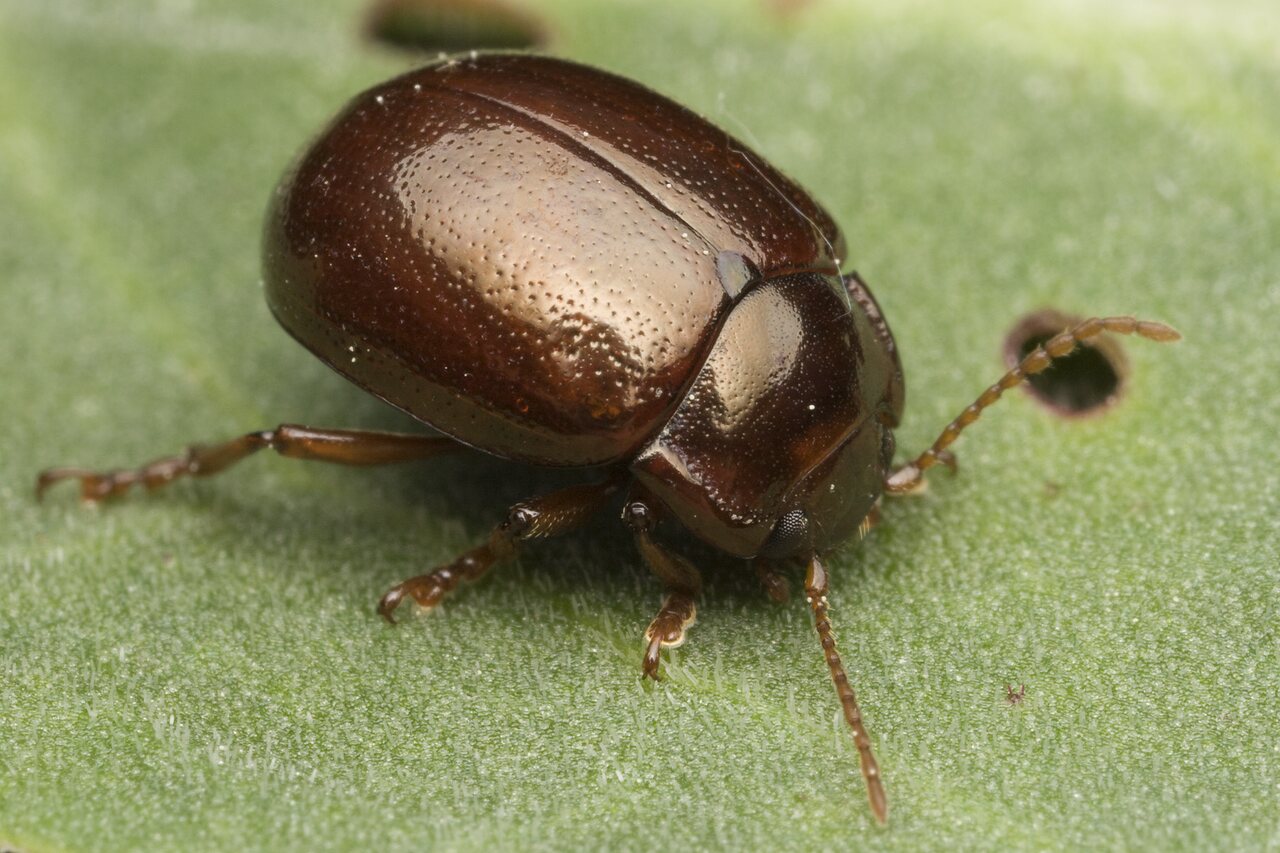
Chrysolina staphylaea · rudasis puošnys
- brown leaf beetle
- pimperikuoriainen
- rudasis puošnys
- bruinrood goudhaantje, grote bruine goudhaan, bruinrode goudhaan, moerashaantje
- rostbladbagge
ukbeetles.co.uk/chrysolina-staphylaea It is the most widespread Chrysolina, occurring throughout the Palaearctic, east to China and Korea, and extending north through Scandinavia and the U.K. to the north of Iceland. In Turkey it has been recorded up to 2300m. Following accidental introductions in the 19th century it has since become established in North America and Canada. Both adults and larvae are widely polyphagous on a range of herbaceous plants including various mints, plantains, buttercups and yarrow, and may occur in almost any habitat e.g. all types of grassland, moorland, agricultural borders, parks, woodland, dunes and shingle banks, and they have been recorded developing on Plantago maritima (etc.) in salt marsh situations where the larvae can survive immersion in seawater.
Adults occur year-round but are most common from April to June and again from August to September when they may be particularly abundant. New generation adults eclose during July and August and feed until September or October when they move to overwintering sites among tussocks, moss or under bark etc, very occasionally they will copulate in the autumn but this generally occurs in the spring. They emerge in April, resume feeding and begin mating. Oviposition begins in May and continues through June; eggs are laid singly or in small groups on the underside of leaves or on petioles, and larvae emerge after about 2 weeks. Larval development is rapid, generally being completed in 5-8 weeks; they feed on the underside of leaves, usually 2 or 3 to a plant, and pass through 4 instars. Fully grown larvae enter the soil to pupate in a cell below the host and this stage lasts 2 or 3 weeks, with the first adults appearing in early July. Overwintered adults die off after mating and egg-laying is complete and so the two generations do not usually overlap to any large extent.
5-9mm. body and appendages entirely red or red-brown with the ventral and dorsal surfaces similarly coloured. The pronotum and elytra are often weakly metallic and occasionally the pronotum may be a little darker than the elytra. The head is smoothly convex and finely punctured, with prominent eyes and widely separated antennae. The pronotum is transverse and subparallel in the basal half and evenly rounded to obscure anterior angles. The punctation on the disc varies from moderately coarse to coarse and among these there are very fine punctures throughout. The sub-lateral grooves are broad, deep and often extensively punctured towards the base, sometimes becoming weaker anteriorly, and the surface between this and the lateral margin is convex and generally smooth. The elytra are evenly rounded laterally, only weakly shiny, and quite densely and rather randomly punctured although there is a tendency to form rows near the suture; in ssp. lederi they form distinct rows, and in ssp. arthritica the punctation is reduced overall. Females tend to be less elongate and more oval in form and the pro- and meso-tarsi are less dilated when compared with the male.
‥
0 comments
Add a comment